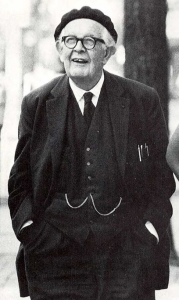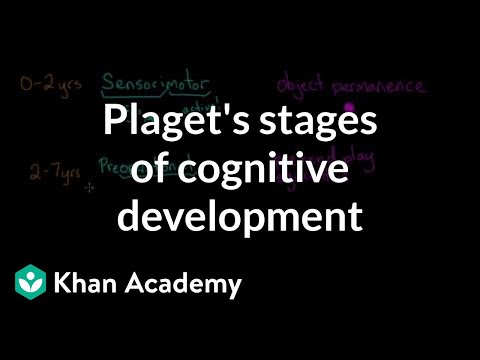2.8: Exploring Cognition
- Page ID
- 60400
\( \newcommand{\vecs}[1]{\overset { \scriptstyle \rightharpoonup} {\mathbf{#1}} } \)
\( \newcommand{\vecd}[1]{\overset{-\!-\!\rightharpoonup}{\vphantom{a}\smash {#1}}} \)
\( \newcommand{\dsum}{\displaystyle\sum\limits} \)
\( \newcommand{\dint}{\displaystyle\int\limits} \)
\( \newcommand{\dlim}{\displaystyle\lim\limits} \)
\( \newcommand{\id}{\mathrm{id}}\) \( \newcommand{\Span}{\mathrm{span}}\)
( \newcommand{\kernel}{\mathrm{null}\,}\) \( \newcommand{\range}{\mathrm{range}\,}\)
\( \newcommand{\RealPart}{\mathrm{Re}}\) \( \newcommand{\ImaginaryPart}{\mathrm{Im}}\)
\( \newcommand{\Argument}{\mathrm{Arg}}\) \( \newcommand{\norm}[1]{\| #1 \|}\)
\( \newcommand{\inner}[2]{\langle #1, #2 \rangle}\)
\( \newcommand{\Span}{\mathrm{span}}\)
\( \newcommand{\id}{\mathrm{id}}\)
\( \newcommand{\Span}{\mathrm{span}}\)
\( \newcommand{\kernel}{\mathrm{null}\,}\)
\( \newcommand{\range}{\mathrm{range}\,}\)
\( \newcommand{\RealPart}{\mathrm{Re}}\)
\( \newcommand{\ImaginaryPart}{\mathrm{Im}}\)
\( \newcommand{\Argument}{\mathrm{Arg}}\)
\( \newcommand{\norm}[1]{\| #1 \|}\)
\( \newcommand{\inner}[2]{\langle #1, #2 \rangle}\)
\( \newcommand{\Span}{\mathrm{span}}\) \( \newcommand{\AA}{\unicode[.8,0]{x212B}}\)
\( \newcommand{\vectorA}[1]{\vec{#1}} % arrow\)
\( \newcommand{\vectorAt}[1]{\vec{\text{#1}}} % arrow\)
\( \newcommand{\vectorB}[1]{\overset { \scriptstyle \rightharpoonup} {\mathbf{#1}} } \)
\( \newcommand{\vectorC}[1]{\textbf{#1}} \)
\( \newcommand{\vectorD}[1]{\overrightarrow{#1}} \)
\( \newcommand{\vectorDt}[1]{\overrightarrow{\text{#1}}} \)
\( \newcommand{\vectE}[1]{\overset{-\!-\!\rightharpoonup}{\vphantom{a}\smash{\mathbf {#1}}}} \)
\( \newcommand{\vecs}[1]{\overset { \scriptstyle \rightharpoonup} {\mathbf{#1}} } \)
\( \newcommand{\vecd}[1]{\overset{-\!-\!\rightharpoonup}{\vphantom{a}\smash {#1}}} \)
\(\newcommand{\avec}{\mathbf a}\) \(\newcommand{\bvec}{\mathbf b}\) \(\newcommand{\cvec}{\mathbf c}\) \(\newcommand{\dvec}{\mathbf d}\) \(\newcommand{\dtil}{\widetilde{\mathbf d}}\) \(\newcommand{\evec}{\mathbf e}\) \(\newcommand{\fvec}{\mathbf f}\) \(\newcommand{\nvec}{\mathbf n}\) \(\newcommand{\pvec}{\mathbf p}\) \(\newcommand{\qvec}{\mathbf q}\) \(\newcommand{\svec}{\mathbf s}\) \(\newcommand{\tvec}{\mathbf t}\) \(\newcommand{\uvec}{\mathbf u}\) \(\newcommand{\vvec}{\mathbf v}\) \(\newcommand{\wvec}{\mathbf w}\) \(\newcommand{\xvec}{\mathbf x}\) \(\newcommand{\yvec}{\mathbf y}\) \(\newcommand{\zvec}{\mathbf z}\) \(\newcommand{\rvec}{\mathbf r}\) \(\newcommand{\mvec}{\mathbf m}\) \(\newcommand{\zerovec}{\mathbf 0}\) \(\newcommand{\onevec}{\mathbf 1}\) \(\newcommand{\real}{\mathbb R}\) \(\newcommand{\twovec}[2]{\left[\begin{array}{r}#1 \\ #2 \end{array}\right]}\) \(\newcommand{\ctwovec}[2]{\left[\begin{array}{c}#1 \\ #2 \end{array}\right]}\) \(\newcommand{\threevec}[3]{\left[\begin{array}{r}#1 \\ #2 \\ #3 \end{array}\right]}\) \(\newcommand{\cthreevec}[3]{\left[\begin{array}{c}#1 \\ #2 \\ #3 \end{array}\right]}\) \(\newcommand{\fourvec}[4]{\left[\begin{array}{r}#1 \\ #2 \\ #3 \\ #4 \end{array}\right]}\) \(\newcommand{\cfourvec}[4]{\left[\begin{array}{c}#1 \\ #2 \\ #3 \\ #4 \end{array}\right]}\) \(\newcommand{\fivevec}[5]{\left[\begin{array}{r}#1 \\ #2 \\ #3 \\ #4 \\ #5 \\ \end{array}\right]}\) \(\newcommand{\cfivevec}[5]{\left[\begin{array}{c}#1 \\ #2 \\ #3 \\ #4 \\ #5 \\ \end{array}\right]}\) \(\newcommand{\mattwo}[4]{\left[\begin{array}{rr}#1 \amp #2 \\ #3 \amp #4 \\ \end{array}\right]}\) \(\newcommand{\laspan}[1]{\text{Span}\{#1\}}\) \(\newcommand{\bcal}{\cal B}\) \(\newcommand{\ccal}{\cal C}\) \(\newcommand{\scal}{\cal S}\) \(\newcommand{\wcal}{\cal W}\) \(\newcommand{\ecal}{\cal E}\) \(\newcommand{\coords}[2]{\left\{#1\right\}_{#2}}\) \(\newcommand{\gray}[1]{\color{gray}{#1}}\) \(\newcommand{\lgray}[1]{\color{lightgray}{#1}}\) \(\newcommand{\rank}{\operatorname{rank}}\) \(\newcommand{\row}{\text{Row}}\) \(\newcommand{\col}{\text{Col}}\) \(\renewcommand{\row}{\text{Row}}\) \(\newcommand{\nul}{\text{Nul}}\) \(\newcommand{\var}{\text{Var}}\) \(\newcommand{\corr}{\text{corr}}\) \(\newcommand{\len}[1]{\left|#1\right|}\) \(\newcommand{\bbar}{\overline{\bvec}}\) \(\newcommand{\bhat}{\widehat{\bvec}}\) \(\newcommand{\bperp}{\bvec^\perp}\) \(\newcommand{\xhat}{\widehat{\xvec}}\) \(\newcommand{\vhat}{\widehat{\vvec}}\) \(\newcommand{\uhat}{\widehat{\uvec}}\) \(\newcommand{\what}{\widehat{\wvec}}\) \(\newcommand{\Sighat}{\widehat{\Sigma}}\) \(\newcommand{\lt}{<}\) \(\newcommand{\gt}{>}\) \(\newcommand{\amp}{&}\) \(\definecolor{fillinmathshade}{gray}{0.9}\)The Cognitive Perspective: The Roots of Understanding
Piaget: Changes in thought with maturation

Making sense of the world
Stages of Cognitive Development
| Age (years) | Stage | Description | Developmental issues |
|---|---|---|---|
| 0–2 | Sensorimotor | World experienced through senses and actions | Object permanence Stranger anxiety |
| 2–7 | Preoperational | Use words and images to represent things but lack logical reasoning | Pretend play Egocentrism Language development |
| 7–11 | Concrete operational | Understand concrete events and logical analogies; perform arithmetical operations | Conservation Mathematical transformations |
| 11– | Formal operational | Utilize abstract reasoning and hypothetical thinking | Abstract logic Moral reasoning |
Criticisms of Piaget’s Theory
Information-Processing Approaches to Development
According to the standard information-processing model for mental development, the mind’s machinery includes attention mechanisms for bringing information in, working memory for actively manipulating information, and long-term memory for passively holding information so that it can be used in the future. This theory addresses how as children grow, their brains likewise mature, leading to advances in their ability to process and respond to the information they received through their senses. The theory emphasizes a continuous pattern of development, in contrast with cognitive-developmental theorists such as Piaget who thought development occurred in stages. Developmental psychologists who adopt the information-processing perspective account for mental development in terms of maturational changes in basic components of a child’s mind. At the same time, they do not offer a complete explanation of behavior. For example, they have paid little attention to behavior such as creativity, in which the most profound ideas often are developed in a seemingly not logical, nonlinear manner. Moreover, they do not take into account the social context in which development takes place.Neo-Piagetian Theories
Some of the information processing approaches that build upon Piaget‘s research are known as neo-Piagetian theories. In contrast to Piaget‘s original work, which identified cognition as a single system of increasingly sophisticated general cognitive abilities, neo-Piagetian theories view cognition as a made up of different types of individual skills. Using the same terminology as information processing approaches, neo-Piagetian theories advance the idea that cognitive development proceeds quickly in certain areas and more slowly in others. Consider for example, our reading abilities and all the skills that are needed to recall stories. These abilities and skills may progress sooner than the abstract computational abilities used in algebra or trigonometry. Also, neo-Piagetian theorists believe that experience plays a greater role in furthering cognitive development than traditional Piagetian approaches claim. Neo-Piagetians also adopted principles from other theories, such as the social-cognitive theory that allowed them to consider how culture and interactions with others influenced cognitive development.[3][4]Cognitive Neuroscience Approaches
- accommodation
- a term developed by psychologist Jean Piaget to describe what occurs when new information or experiences cause you to modify your existing schemas
- assimilation
- a cognitive process that manages how we take in new information and incorporate that new information into our existing knowledge
- cognitive neuroscience
- the scientific field that is concerned with the study of the biological processes and aspects that underlie cognition, with a specific focus on the neural connections in the brain which are involved in mental processes
- cognitive perspective
- an approach that focuses on the process that allows people to know, understand and think about the world
- concrete operational stage
- the stage in which children can think logically about real (concrete) events, have a firm grasp on the use of numbers and start to employ memory strategies, lasts from about 7 to 11 years old
- conservation
- the idea that even if you change the appearance of something, it is still equal in size as long as nothing has been removed or added, usually develops during the concrete operational stage
- egocentrism
- the child is not able to take the perspective of others, typically observed during the preoperational stage
- formal operational stage
- the fourth, and last, stage in Piaget’s theory and lasts from about age 11 to adulthood. Children in the formal operational stage can deal with abstract ideas and hypothetical situations
- information-processing approach
- an alternative to Piagetian approaches, a model that seeks to identify the ways individual take in, use, and store information
- object permanence
- the understanding that even if something is out of sight it still exists, develops between 5 and 8 months old
- Piaget’stheory of cognitive development
- a description of cognitive development as four distinct stages in children: sensorimotor, preoperational, concrete, and formal
- preoperational stage
- the stage in which children can use symbols to represent words, images, and ideas, which is why children in this stage engage in pretend play, lasts approximately 2 to 7 years old
- reversibility
- objects can be changed and then returned back to their original form or condition, typically observed during the concrete operational stage
- schemas
- an existing framework for an object or concept
- sensorimotor stage
- the stage in which children learn about the world through their senses and motor behavior, lasts from birth to about 2 years old
- theory-of-mind (TOM)
- explains how children come to understand that people have thoughts, feelings, and beliefs that are different from their own, develops during the preoperational stage



